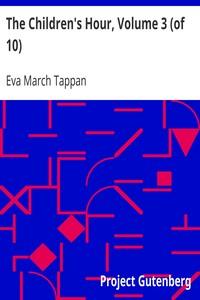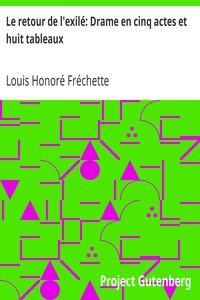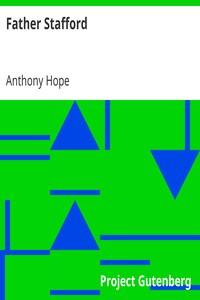|
|
Read this ebook for free! No credit card needed, absolutely nothing to pay.Words: 209386 in 37 pages
This is an ebook sharing website. You can read the uploaded ebooks for free here. No credit cards needed, nothing to pay. If you want to own a digital copy of the ebook, or want to read offline with your favorite ebook-reader, then you can choose to buy and download the ebook.

: An Illustrated History of Ireland from AD 400 to 1800 by Cusack Mary Francis - Ireland History@FreeBooksTue 06 Jun, 2023 Contradictory as these statements appear, they may easily be ranged into two separate theories of pagan or Christian origin. Dr. Petrie has been the great supporter of the latter opinion, now almost generally received. He founds his opinion: On the assumption that the Irish did not know the use of lime mortar before the time of St. Patrick. For this assumption, however, he gives no evidence. On the presence of certain Christian emblems on some of these towers, notably at Donaghmore and Antrim. But the presence of Christian emblems, like the cross on the Ogham stones, may merely indicate that Christians wished to consecrate them to Christian use. On the assumption that they were used as keeps or monastic castles, in which church plate was concealed, or wherein the clergy could shelter themselves from the fury of Danes, or other invaders. But it is obvious that towers would have been built in a different fashion had such been the object of those who erected them. The late Mr. D'Alton has been the most moderate and judicious advocate of their pagan origin. He rests his theory on certain statements in our annals, which, if true, must at once decide the dispute. The Annals of Ulster mention the destruction of fifty-seven of them in consequence of a severe earthquake, A.D. 448. He adduces the testimony of Giraldus Cambrensis, who confirms the account of the origin of Lough Neagh by an inundation, A.D. 65, and adds: "It is no improbable testimony to this event, that the fishermen beheld the religious towers , which, according to the custom of the country, are narrow, lofty, and round, immersed under the waters; and they frequently show them to strangers passing over them, and wondering at their purposes" . This is all the better evidence of their then acknowledged antiquity, because the subject of the writer was the formation of the lough, and not the origin of the towers. Mr. D'Alton's second argument is, that it was improbable the Christians would have erected churches of wood and bell towers of stone, or have bestowed incomparably more care and skill on the erection of these towers, no matter for what use they may have been intended, than on the churches, which should surely be their first care. Possibly, suggests Sir W. Wilde, they may have been the remains of mother and child. The amount of gold ornaments which have been found in Ireland at various times, has occasioned much conjecture as to whether the material was found in Ireland or imported. It is probable that auriferous veins existed, which were worked out, or that some may even now exist which are at present unknown. The discovery of gold ornaments is one of the many remarkable confirmations of the glowing accounts given by our bardic annalists of Erinn's ancient glories. O'Hartigan thus describes the wealth and splendour of the plate possessed by the ancient monarchs who held court at Tara:-- "Three hundred cupbearers distributed Three times fifty choice goblets Before each party of great numbers, Which were of pure strong carbuncle, Or gold or of silver all." Dr. Petrie observes that this statement is amply verified by the magnificent gold ornaments, found within a few yards of this very spot, now in the possession of the Royal Irish Academy. We shall see, at a later period, when the cursing of Tara will demand a special notice of its ancient glories, how amply the same writer has vindicated the veracity of Celtic annalists on this ground also. The crannoges were formed on small islets or shallows of clay or marl in the centre of a lake, which were probably dry in summer, but submerged in winter. These little islands, or mounds, were used as a foundation for this singular habitation. Piles of wood, or heaps of stone and bones driven into or heaped on the soil, formed the support of the crannoge. They were used as places of retreat or concealment, and are usually found near the ruins of such old forts or castles as are in the vicinity of lakes or marshes. Sometimes they are connected with the mainland by a causeway, but usually there is no appearance of any; and a small canoe has been, with but very few exceptions, discovered in or near each crannoge. Since the investigation of these erections in Ireland, others have been discovered in the Swiss lakes of a similar kind, and containing, or rather formed on, the same extraordinary amount of bones heaped up between the wooden piles. Flint proper, or chalk flint, is found but in few places in Ireland; these are principally in the counties of Antrim, Down, and Derry. In the absence of a knowledge of the harder metals, flint and such-like substances were invaluable as the only material that could be fashioned into weapons of defence, and used to shape such rude clothing as was then employed. The scarcity of flint must have rendered these weapons of great value in other districts. Splitting, chipping, and polishing, and this with tools as rude as the material worked on, were the only means of manufacturing such articles; and yet such was the perfection, and, if the expression be applicable, the amount of artistic skill attained, that it seems probable flint-chipping was a special trade, and doubtless a profitable one to those engaged in it. When flints were used as arrows, either in battle or in the chase, a bow was easily manufactured from the oak and birch trees with which the island was thickly wooded. It was bent by a leathern thong, or the twisted intestine of some animal. The handles of the lance or javelin--formidable weapons, if we may judge from the specimens in the Museum of the Royal Irish Academy--were also formed of wood; but these have perished in the lapse of ages, and left only the strangely and skilfully formed implement of destruction. Among primitive nations, the tool and the weapon differed but little. The hatchet which served to fell the tree, was as readily used to cleave open the head of an enemy. The knife, whether of stone or hard wood, carved the hunter's prey, or gave a deathstroke to his enemy. Such weapons or implements have, however, frequently been found with metal articles, under circumstances which leave little doubt that the use of the former was continued long after the discovery of the superior value of the latter. Probably, even while the Tuatha De Danann artificers were framing their more refined weapons for the use of nobles and knights, the rude fashioner of flint-arrows and spear-heads still continued to exercise the craft he had learned from his forefathers, for the benefit of poorer or less fastidious warriors. FOOTNOTES: "Malisons, malisons, more than ten, That harry the Ladye of Heaven's hen." Free books android app tbrJar TBR JAR Read Free books online gutenberg More posts by @FreeBooks
: The Children's Hour Volume 3 (of 10) Stories from the Classics by Tappan Eva March Editor - Children's stories; Classical literature Adaptations Children's Anthologies@FreeBooksTue 06 Jun, 2023

: Le retour de l'exilé: Drame en cinq actes et huit tableaux by Fr Chette Louis Honor - French-Canadian drama FR Théâtre@FreeBooksTue 06 Jun, 2023
|
Terms of Use Stock Market News! © gutenberg.org.in2025 All Rights reserved.






